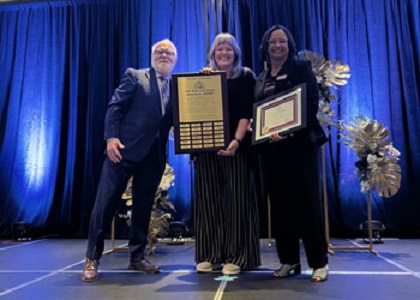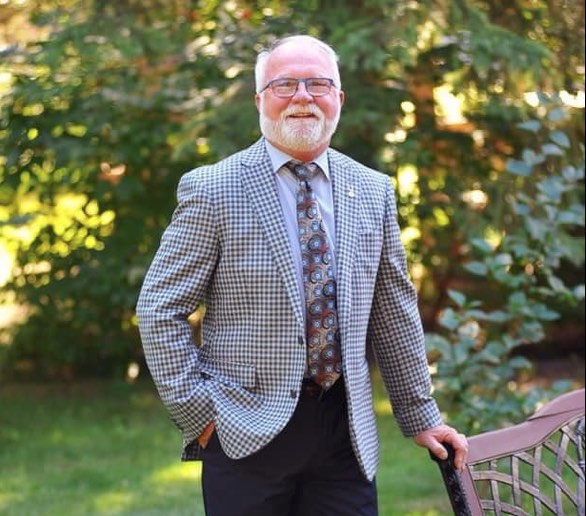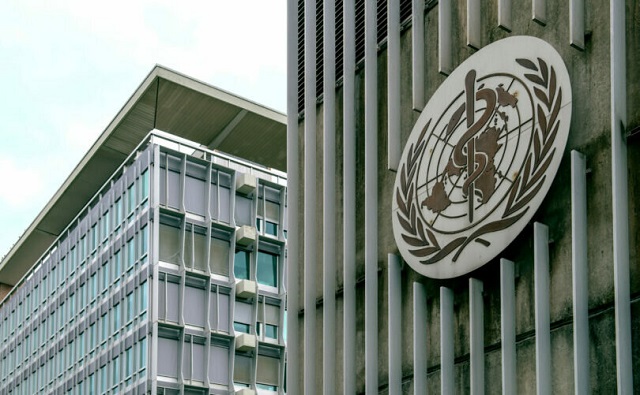City of Red Deer
City Council Forum Part 1 – Your main concerns regarding crime and safety

1. What are your main concerns regarding crime and safety and how will you address these if you are elected?
Mayoral Candidates
Buck Buchanan
Crime and Safety is generally ranked number 1 or 2 in our citizens’ concerns. I would like to see a Hybrid model of Policing tried however not sure after 93) three policing studies that maybe that is a dead issue. I think it would give the Municipality quicker response to Local Issues. I have also advocated for Foot patrols in the downtown core and we are to see that increase shortly, I would also like to see the Auxiliary Program reinstated and have done Provincial and Federal Resolutions to address this, however now we are told it is an Insurance issue. I would also like to see us bring a Collision Centre to Red Deer as the RCMP has piloted one in Grand Prairie and it saved the Officers a lot of time. I have also suggested to the Officer in Charge that we should have a Constable Committee that directly reports/responds to council so that the people sitting on Council are aware of what the members doing the job need regarding equipment or Resources, this information was also help with dealing with the Justice system and what needs to be advocated with the Province for or by-law changes.
Ken Johnston
I’ll divide this answer into two sections ;enforcement and prevention. As to enforcement I am encouraged that our crime statistics have been dropping with the strategic effort of our RCMP partners. It wasn’t that long ago we were ranked in the top five most dangerous communities in Canada and now we are ranked 37th by McLeans Magazine. The Annual Policing Plan is producing results. Downtown patrols in partnership with the Social Diversion team for mental health supports are also producing results. The primary challenge is the social disorder in our downtown. A functioning shelter solution is needed and the Province will be helping here. Until then our Police, EMS and agencies need a space to direct people and get them off the street. We are currently piloting a housing focussed shelter approach that has shown good results in Calgary. Shelter population has reduced by 40% there and the length of stay is shorter. Two addictions treatment centers are opening shortly with a combined capacity of 110 beds. The province has also promised us a drug court and additional Crown prosecutors to help with the judicial process. I am also advocating for social enterprise so that people will have meaningful daily activities and the dignity of work. Prevention; more residential development and more events in our downtown will go a long way to preventing crime. Stronger community associations, stronger social connections, volunteerism and simply getting to know your neighbour allow us to watch out for each other while benefiting the entire community . Our crime prevention centre is doing great work and I look forward to them playing a key role in this area. We can all play a greater role in crime prevention as ultimately it pays off financially as well. Our policing budget continues to be a major part of our expense at the city. Any improvements we make here have a direct benefit to our bottom line.
Council Candidates
Bruce Buruma
-
We can’t let crime be a defining narrative of who we are as a community. Crime, addictions and homelessness are top concerns citizens are commenting on throughout the election–it is a defining issue and they expect action and results. A haphazard approach to homelessness and addictions has created chaos and frustrations. We need to act on these issues with a solid plan that must also have the confidence of our community. Similar to the Child Advocacy Centre model, we need to bring resources and supports together in a coordinated way that demonstrates real results. These are issues that communities across Canada face and we need to adopt strategies that bring results.
-
Along with other communities, we need to push for justice reforms that respond to citizen concerns, not the ‘rights’ of criminals. We require additional funding for judges and crown prosecutors–the lack of these resources are seeing far too many charges being dropped.
-
Targeted and strategic enforcement needs to be supported, particularly in the area of drug trafficking, which is the root of many concerns.
-
We have seen a decline in crime rates, yet the public still sees this as a key concern. ‘The community is the police and the police are the community’ speaks to the need to work together to understand issues, look for solutions and share the challenges, perceptions and progress being made. One of my earliest involvement in the community was sitting on the Red Deer Police Commission. I believe community involvement and perspectives on policing issues would add value to our policing response.
Brenda Campbell
My main concerns regarding crime and safety include being able to enjoy the beautiful trails and areas in Red Deer, as well as downtown, comfortably. Not only is the feeling of safety paramount, but keeping Red Deer lands clean and free of needles/sharps and other waste is a concern. Encampments cost a lot to clean up. Furthermore, personal and property safety is continually being violated at people’s homes and/or businesses as well out and about in the community. I would address these concerns by lobbying for stricter laws and penalties for repeat offenders. Catching and releasing is obviously not working. Higher levels of government need to step up and fund Red Deer and other municipalities so we can provide treatment and other facilities to house culprits who are trespassing and/or committing other crimes.
Craig Curtis
City Council has approved major increases in the RCMP budget over the last five years to address an increase in crime and the feeling of community safety. With Project Pinpoint the major crime rate has gone down but is still a significant problem.
The image and success of the Downtown has suffered through the economic downturn, the pandemic and spillover effect from the temporary homeless shelter in railyards. During the pandemic homelessness and addictions have increased. For the Downtown to be successful, the City must address the social and economic issues together. To do this I would advocate a three-pronged approach:
Fast track the building of the new shelter with wraparound services for addictions, mental health and housing. Funding was approved two years ago and no action has been taken.
Change the narrative about development by lowering development costs and taxes or by providing incentives
Increase enforcement with a command centre in the core and increased foot and bike patrols. In other areas of the I would support the following initiatives:
Reallocate funding to the Crime Prevention Centre, which is critically underfunded. This includes Proactive programs such as Neighbourhood Watch, Mothers Against Drunk Driving and Citizens on patrol.
A regular bike patrol throughout Waskasoo Park potentially using auxiliary officers.
Michael Dawe
1. Increase police patrols, particularly in the Downtown.
2. Reforms to the judicial system. We need to get away from the catch and release model and to one that moves offenders into a drug treatment program. I was part of the meeting with the Minister of Justice where we pushed for the implementation of drug courts. We got a promise that they will be included in the new Court House/Justice Centre when it is completed.
3. We need a residential drug treatment centre. We have to begin to break the drug addiction cycle, or else we just get more and more of the same. The City provided a large piece of land to the Province in a remote north east corner of the City (land that had originally been purchased as a third snow dump site) for a 75 bed residential drug treatment centre. There is also a 15 bed adolescent drug treatment centre. that has already been built on the old Michener Grounds by Alberta Health Services. I live near the adolescent drug treatment centre and there have been no noticeable impacts on the surrounding neighbourhood.
Victor Doerksen
Idleness is the devils’ workshop. The first step to reducing crime and social disorder is employment and purpose in life. Easily said, harder to do. Downtown Red Deer is a vexing problem … the concentration of the homeless shelter, the Overdose Prevention site and other human services has resulted in increased crime and vandalism. On the other hand, each homeless person, each addict has a name and families who need support. Let’s get the homeless shelter built, close the overdose prevention site, integrate services providers, and get past harm reduction to real reform. Let’s get our walking, biking corridors safe and inviting.
Sarah Harksen
As a Parent and Citizen of Red deer my main concerns are the lack of safety we have throughout our City. When we are having hijackings, robberies, shootings, break ins, thefts, and assult happening during the day, evening, afternoons etc there is something wrong. At the beginning of my campaign I had stated I wanted to push for a Municipal Police Force. I have done my research and it would cost our City alot in funding. This is something I will push for, however at this time we need to address our Crime now as it is growing and out of control. We need to Budget for more officers on foot and in areas that are high crime and traffic. Many of these areas are residential places that have families and such that the risk of injury etc are high. I would push our governments for funding to help cover the cost to bring more officers to our City. At the end of the day there should never be a price on our peoples safety.
Vesna Higham
So much of the crime and social disorder in our community is tied directly to drug addictions in particular and to the chronic homelessness that lifestyle often precipitates. There’s been a lot of media coverage of these issues over the past year or so. The existing shelter has been before Council three times in the last six months with requests to extend the temporary shelter contract at Cannery Row – with the majority of Council (myself included) denying each request due to absolutely untenable negative social disorder impacts to the surrounding neighbourhoods, businesses, and residents.
I’ll begin by saying that I support the need for shelter services for the homeless, particularly given our harsh winter climate – and the City is working with the Province to construct a new permanent facility to accommodate our vulnerable population. However, what I cannot abide is the ongoing, unrelenting, totally unacceptable: garbage, smashed window/doors, personal threats, street fires, urination, feces, discarded needles, private property encampment, violence, and chaotic “war zone” that local residents and businesses describe taking place on a daily basis in the area surrounding the shelter and OPS.
We need a different operating model if we ever hope to make the permanent shelter work in our community. And we NEED to get the shelter and Overdose Prevention Site (OPS) out of the downtown core. The single most important thing we need to do as a city to mitigate the social disorder in our downtown is to consolidate shelter and related services into one permanent, integrated shelter program – to eliminate the ongoing migration of vulnerable people throughout the downtown.
Currently, the homeless migrate from place to place daily: to obtain food, needles, rest, shelter, health care, to use the OPS, and unfortunately, sometimes to commit crimes. They often leave a path of destruction and disorder in their wake, particularly if they’re under the influence of drugs or alcohol.
What I strongly advocate for is to work with the Province (who funds and oversees shelter and social services) to bring related social services onto the one permanent shelter site. That means bringing as many of the following services onsite as possible: daily food services, health clinic, mental health counselling, job/skills training, leisure/recreation, and addiction recovery references/modalities, etc. Furthermore, I’ve been very vocal about my position respecting the operating model
employed by the current shelter and OPS operators, which effectually requires little personal responsibility or organizational accountability for these negative activities happening in our downtown.
I feel strongly that the new shelter must be required by the Province to adopt a “Good Neighbour” operating model with strict oversight and mandatory clientele intake questions/data gathering, as well as basic expectations like an evening curfew and community service. We need to elevate our expectations (both in the short and long term) to help people break out of the cycle of these addictions and crime that are so destructive not only to their own lives, but to our community with such devastating negative impact. The only way the new permanent shelter can successfully co-exist with its surrounding neighbourhood is to embrace and meaningfully maintain a “Good Neighbour” operating model that respects surrounding uses.
The status quo cannot continue. We must fight for a more accountable operating model. Our citizens deserve better.
Cindy Jefferies
A former colleague of mine used to say “perception is reality”. I would add each one of us has a different perception. For some, the downtown feels quite safe. For others, downtown is a place they never go because they feel unsafe. We need to take action and get a permanent shelter (with wrap around supports) built to help people experiencing homelessness and/or addiction. Our community needs more affordable housing, including temporary supportive housing and permanent supportive housing. Mental illness is real and many people in our community are suffering. In addition to COVID-19, the OPIOID epidemic is putting tremendous strain on resources and the number of people dying and needing support is alarming. I believe most of the crime in our community is connected to organized crime – some of it is drug related and some of it retail related. We need to be strategic and focus on those who commit most of the crime. There are issues in the justice system that need to be addressed. The city has a role to play in advocating for the needs of our community. We need to be communicating with the provincial and federal governments, through the Federation of Canadian Municipalities and Alberta Urban Municipalities Association and our MLAs and MPs to address the challenges and find workable approaches.
Ryan Laloge
The current approach to crime is ineffective and council needs to bring immediate focus and initiatives to the issue, including for the longer term structural changes to the funds we now spend. Our efforts need to be effective and measurable and the delays in initiatives are failing to improve our lives. The City Center social issues including policing are my main concern. Council needs a task force approach to this.
Lawrence Lee
A prime focus of mine will include strategies to mitigate repeat offenders. Advocacy through to the Justice Minister to evaluate the “catch and release” situation we find ourselves in. The incoming drug court will provide an opportunity to direct those that are under the influence of addictions a chance to direct them to our incoming drug treatment center due to open next year. We have already created a downtown foot patrol in order to increase visibility but I will also ensure we look at analytics in order to see where our hot spots are in order to proactively address. The long term goal is to continue to encourage business and residents into the downtown core. We have seen great reductions in property crime throughout neighbourhoods as more residents have been working and present in their homes which is a huge crime deterrent. As for walking the streets we have very low assault and robberies as people travel in on our trails and downtown during the evenings. I have also successfully brought forward more resources to clean up homeless camps set up in our park system and will continue to support that enforcement.
Janise Somer
Having spent the past 3 years working in crime prevention and in an office downtown, and having talked with many business owners and citizens, I understand citizens are frustrated. I also understand we cannot police our way out of our current situation.
I believe the root cause of most of our crime and social disorder is addiction. Red Deer currently has one Overdose Prevention Site and zero recovery centres! To clarify, an Overdose Prevention Site is a temporary site, and the goal is to provide clean supplies and save lives by administering naloxone in the event of an overdose. The current site was installed by the Province at a location determined by them. As a Councillor, I would advocate that the Overdose Prevention Site be removed and/or replaced with a Supervised Injection Site. A Supervised Injection Site (SIS) is meant to be a permanent location with integrated, wrap-around services focused not just on saving lives but helping people move to a healthier place in their life.
And, without recovery, the addiction problem cannot be dealt with. As a community, we can help our City by supporting the Red Deer Dream Centre, a residential treatment centre for men opening in early 2022, and the Adeara Recovery Centre, a residential treatment centre for women in Central Alberta. And we need to continue to hold the Province accountable to build the recovery centre they promised as soon as possible. And regarding the current shelter, I am weary of other candidates touting the Provincial government’s permanent shelter as “the solution”. Even if we get the funding, the completion of a shelter is probably 2-3 years away!
And what do we do in the interim? We cannot shut down the current shelter and turn people out into the cold to die. Our citizens without homes are someone’s mother, father, brother, sister, son, or daughter. Is this caring for our neighbours? Until the new shelter is built and, even when the shelter is built, we need to surround that shelter with supports that will mitigate the impacts of a shelter on surrounding businesses and residents. Please reference my blog post, dated April 7,
2021, The Issue Is Not Where the Shelter is Located for more details on some of the supports I am recommending.
Finally, I do not support enabling. Our social agencies need to be held accountable, with our help, to move people forward in their lives and to be good neighbours wherever they are located.
Dianne Wyntjes
Safety in a community, on the streets and in our neighbourhoods is always a priority. We don’t need any more studies about crime and safety in Red Deer. I recognize crime and safety action is about prevention before crime happens, education and actions for crime prevention, and enforcement. Approaches to the root causes of crime and community needs as a growing city, what are the risk factors for crime, such as addictions and mental health and the recognition that jobs and education can mean a safer community along with the supports and actions for reducing poverty. Upstream approaches and targeted community approaches that prevent crime matter. Including attention to risk factors such as youth staying in school or family supports challenging violence in homes, and interventions before crisis occur.
Another action for safety is the use and enjoyment of our public spaces; the more activities and interactions in a community make it safer, e.g .downtown activities and residential living. I think about what else is needed for a safer community, such as transitional housing or affordable housing, citizens continuing to report crime for crime analysis, and the role of courts and incarcerations in enforcement. The continued work of the City’s community Systems Leadership Team with community
representatives from Alberta Health Services, Children’s Services, the City of Red Deer, Red Deer Catholic and Public School Districts, Community Corrections, Urban Aboriginal Voices Society and the RCMP.
Landing on the site and construction of the future Provincially funded and operated integrated shelter and ensuring temporary adequate shelter spaces are available for the vulnerable. It’s also important to move the needle and address the needs for more transitional, permanent housing and housing supports in Red Deer and supports to keep one housed. This work will be done through the City’s CHHIP – Community Housing and Homelessness Integrated Plan which is an important tool for housing supports in Red Deer. Coordination among community agencies and working with systems in place, and addressing barriers that are preventing us to accomplish this work. Access to affordable housing brings stability and security for individuals and families and is so important for quality of life.
Looking to the provincial Red Deer Recovery Centre with 75 beds for addictions and mental health which should help individuals and families with addictions and mental health challenges, which is set to open in the second half of 2022. And the future Drug Treatment Court can be helpful once it’s operational through Alberta Justice in Red Deer. Conversations and questions to the Provincial government about health decisions for the downtown Overdose Prevention Site; it’s currently in a temporary small trailer, which exacerbates social concerns downtown.
New Councillors being brought up-to-date from RCMP Superintendent Grobmeier regarding current best policing practices and resources throughout the City, updating Council about the active downtown Policing Unit with the addition of two additional officers and the Social Diversion Team who are redirecting calls from the RCMP and freeing up policing services rather than attending to social calls with an LPN and mental health/addictions social workers. Recognizing the expansion of powers for Community Peace Officers through the provincial government and their community safety roles in crimes such as mischief or small thefts and increasing outreach for business safety support. Continued and further community education about crime prevention initiatives we can all take to reduce crime and enhance our community safety. With continued eyes and ears on the street and reporting crime.
Continued Council conversations and energies with the Provincial and Federal orders of government and through the Federation of Canadian Municipalities and the Alberta Urban Municipalities Association about justice in the courts, sentencing and rehabilitation of criminals.
City of Red Deer
City of Red Deer Employee Honoured with Bob Stollings Memorial Award for Outstanding Contributions

Annette Scheper, Community & Program Facilitator in the Safe & Healthy Communities Department is The City’s 2025 recipient of the Bob Stollings Memorial Award.
The Bob Stollings Memorial Award is given out each year to a City employee who displays outstanding performance in alignment with The City’s RISE cornerstone values – respect, integrity, service and excellence. Nominations for the award are submitted by fellow coworkers detailing the employee’s achievements professionally and interpersonally, along with letters of support. The award is considered a great honour among City staff.
With an impressive 22-year career, Annette has played a pivotal role in shaping Red Deer’s cultural and special events landscape. Her leadership and innovation have brought thousands of successful events to life, creating lasting traditions that enrich the lives of residents. Her commitment to excellence and resourcefulness has ensured that community initiatives are inclusive, accessible, and impactful.
One of Annette’s most notable achievements is the development of the Community Loan Program, which provides essential resources for local groups, contributing an annual value of $86,778.95 back into the community. In addition, she has successfully led and executed a variety of large-scale events, demonstrating remarkable problem-solving skills and a dedication to sustainability. From creating elaborate event designs with repurposed materials to managing complex logistics, she continuously sets the standard for excellence.
“Annette exemplifies the best of our organization,” said City Manager, Tara Lodewyk. “Her unwavering dedication, innovative thinking, and ability to bring people together has made a profound impact on our city. This award is a testament to her hard work and passion for creating meaningful experiences for our community.”
The Bob Stollings Memorial Award was first established in 1985 and is presented every year to honour Robert (Bob) E. Stollings, a loyal and dedicated City employee from 1960-1984.
City of Red Deer
Red Deer will choose a new Mayor as Ken Johnston decides to step away

It’s a telling detail about the person who leads Red Deer City Council. Always putting the city’s needs ahead of his own, Mayor Ken Johnston has announced his intentions within days of the opening of Nominations for October’s municipal elections,
After 12 years on council, Mayor Ken Johnston has decided against running for a second term as Mayor this fall. Johnson shared his decision in front of colleagues and supporters in a touching announcement on Wednesday.
At 71 years old, Johnston remains vibrant, passionate and healthy. He says that’s exactly why he and his wife Carolyn have decided now is the right time to start their next stage of life together.
Mayor Johnston listed a number of highlights and achievements he can look back on, including his help advocating for the redevelopment of Red Deer Regional Hospital, the growth of Red Deer Polytechnic, and positive moves in Economic Development.
All these lead of a feeling of ease about the decision to step away, though affordable housing and a permanent shelter for the homeless remain pressing concerns.
With about 8 months remaining in his term, Mayor Johnston is planning to push hard to move the needle on these housing issues.
“We’re looking forward to some more work and we’ll be going to the community shortly about it. So I still have optimism that maybe before the term is out we can have an announcement.”
This is the second major political announcement in Central Alberta in the last number of days. Earlier this week Red Deer Mountain View MP Earl Dreeshen announced he won’t be running in the next federal election.
-

 Autism2 days ago
Autism2 days agoRFK Jr. Exposes a Chilling New Autism Reality
-

 COVID-192 days ago
COVID-192 days agoCanadian student denied religious exemption for COVID jab takes tech school to court
-

 International2 days ago
International2 days agoUK Supreme Court rules ‘woman’ means biological female
-

 2025 Federal Election2 days ago
2025 Federal Election2 days agoNeil Young + Carney / Freedom Bros
-

 2025 Federal Election1 day ago
2025 Federal Election1 day agoTucker Carlson Interviews Maxime Bernier: Trump’s Tariffs, Mass Immigration, and the Oncoming Canadian Revolution
-

 Health2 days ago
Health2 days agoWHO member states agree on draft of ‘pandemic treaty’ that could be adopted in May
-

 Business1 day ago
Business1 day agoDOGE Is Ending The ‘Eternal Life’ Of Government
-

 espionage1 day ago
espionage1 day agoEx-NYPD Cop Jailed in Beijing’s Transnational Repatriation Plot, Canada Remains Soft Target




